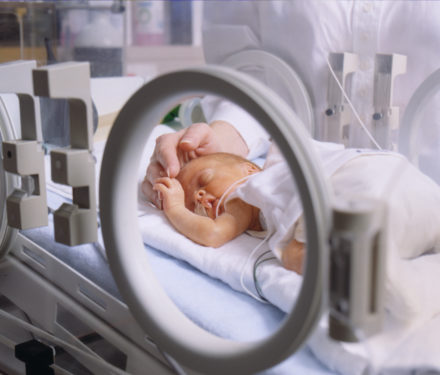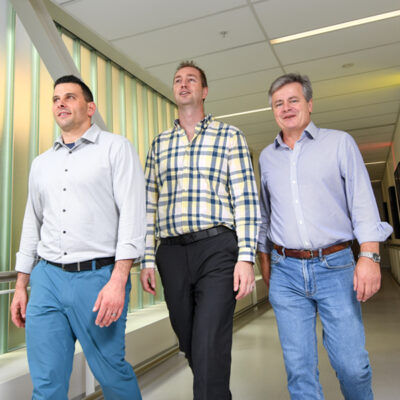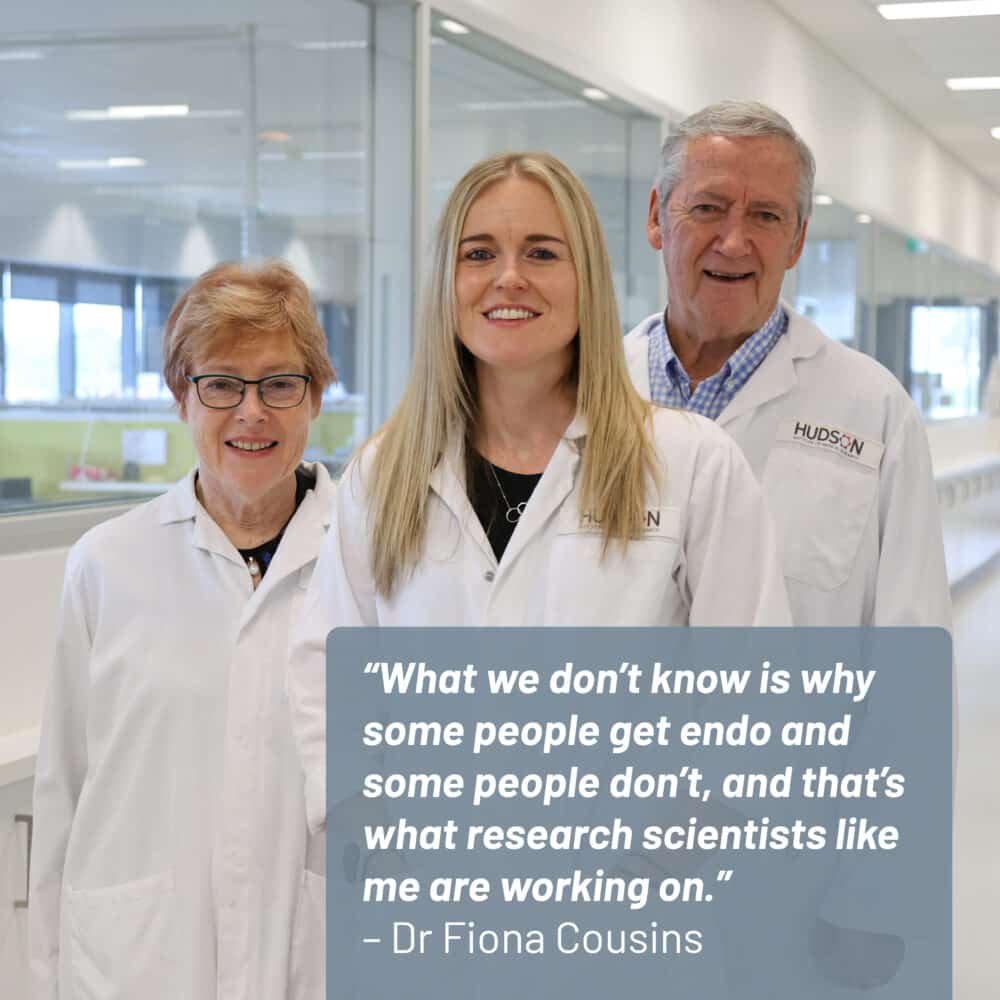Preparing healthcare providers for possible cord-clamp change
By Hudson Institute communications
Our researchers are educating maternity and healthcare professionals for a possible change in birth practices by 2020, as their research moves from the laboratory to the clinic.

The workshops, being delivered throughout Victorian hospitals, aim to educate healthcare workers about the benefits and consequences for newborns of delayed umbilical cord-clamping.
Delayed clamping, after the infant is stable and breathing, has been shown to result in important health benefits, particularly for babies requiring help at birth.
Professor Stuart Hooper and Associate Professor Graeme Polglase, together with Dr Sasha Skinner from Hudson Institute, Monash University and Monash Health have been leading the workshops to provide in-depth understanding of the processes and changes a newborn baby goes through at birth.

“This foundation knowledge will enable healthcare professionals, such as obstetricians, midwives and paediatricians, to understand what is happening at birth when they clamp the cord and why common practices may change, as new evidence from clinical trials become available,” Dr Skinner said.
“We’re not advocating for change, but we’re saying, ‘this is the physiology we need to consider, this is what the current clinical research tells us and this is where we think future trials will lead’.”
2020 vision
Safer Care Victoria has commissioned the delivery of the workshops. The aim is to present the workshops to all birth suites across Victoria by 2020.
Course structure
The seminar provides in-depth understanding of
- Time of onset of breathing and cord-clamping.
- Effect on an infant’s blood pressure, cardiac output, heart rate and blood volume.
- Blood transfusion between the fetus and placenta.
- Effects of umbilical cord-milking
Facts
- More than five per cent of newborns born worldwide need help breathing immediately after birth.
- Worldwide, more than 800,000 newborns die annually because they do not breathe well after birth.
- The majority of newborns that die are born in developing countries, but are born at full-term and are otherwise completely healthy.
- Birth asphyxia is a result of a newborn being deprived of oxygen for long enough during the birth process to cause physical harm, usually to the brain.
- Babies with mild or moderate birth asphyxia may recover fully. Babies who have long periods of asphyxia may develop permanent injury, which could affect their brain, heart, lungs, kidneys or other organs.
Contact us
Hudson Institute communications
t: + 61 3 8572 2697
e: communications@hudson.org.au
About Hudson Institute
Hudson Institute’ s research programs deliver in five areas of medical need – inflammation, cancer, reproductive health, newborn health, and hormones and health. More
Hudson News
Get the inside view on discoveries and patient stories
“Thank you Hudson Institute researchers. Your work brings such hope to all women with ovarian cancer knowing that potentially women in the future won't have to go through what we have!”







